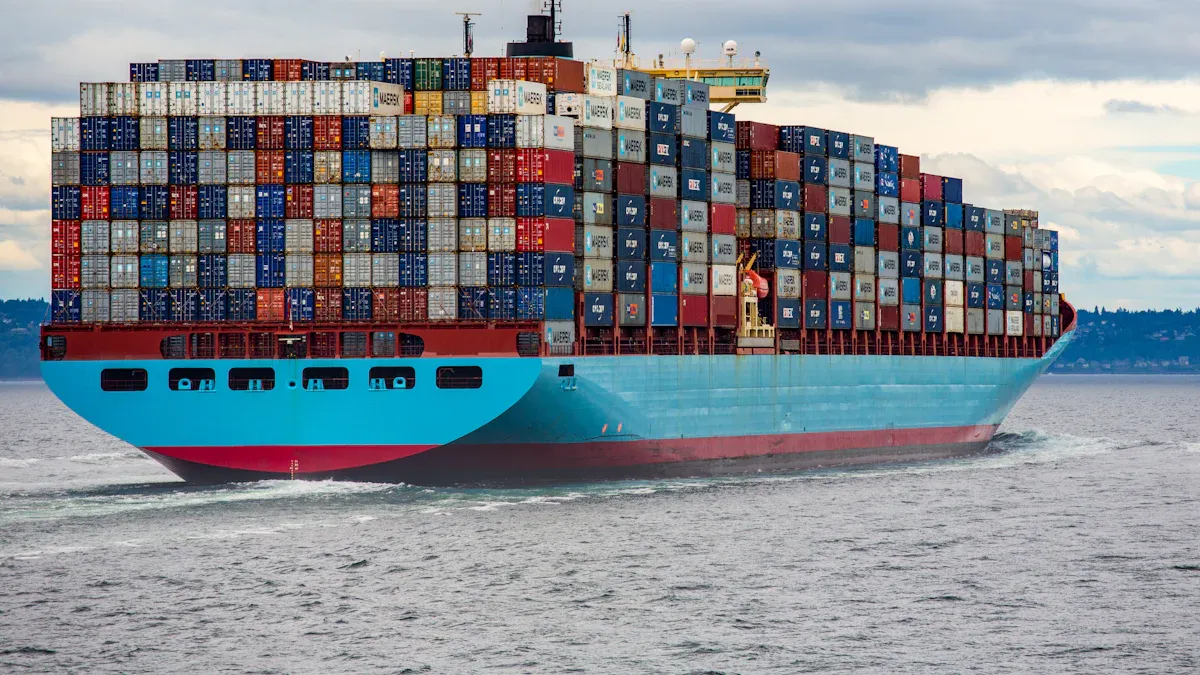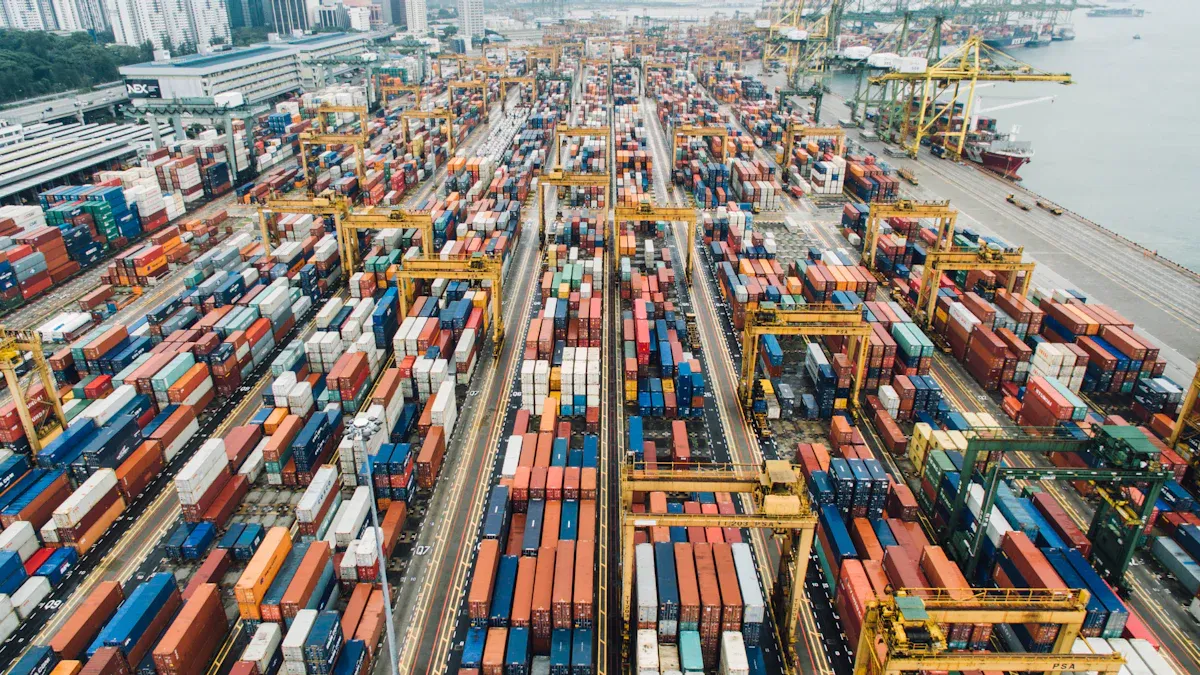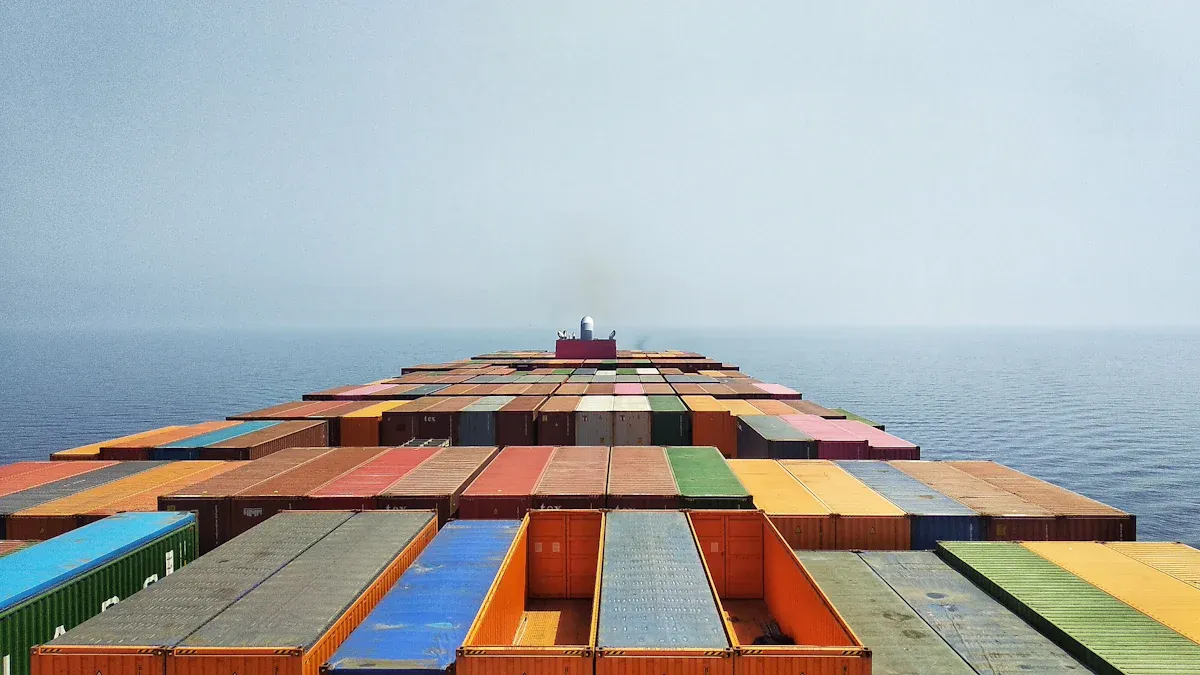How to Track Your Cargo and Container Shipments Online

You can track your cargo and container shipments online quickly and reliably. Most platforms ask for a shipment identifier, which might be a container number, Bill of Lading, or booking reference. When you enter these details, you receive real-time updates that help you know where your goods are at any moment. Globe logistics cargo and container tracking gives you peace of mind and helps you manage shipments more efficiently.
Key Takeaways
Use your container number, Bill of Lading, or booking reference to track shipments online. This ensures you get accurate and real-time updates.
Choose reliable tracking platforms like carrier websites or third-party tools. These options provide features like automated updates and multi-shipment tracking.
Real-time updates help you manage your logistics efficiently. You can plan better and respond quickly to any delays or issues.
Follow industry standards for tracking to ensure accuracy and consistency. This improves communication and transparency in your supply chain.
Utilize customer support from tracking platforms for quick assistance. This helps resolve any problems and keeps your shipments on track.
Shipment Details

Container Number
You need a container number to track your shipment online. This number is a mix of letters and numbers. You can find it marked on the outside of the container. Each shipping company uses a different format. For example, some use three letters and seven numbers, like "ABC1234567". Others use only numbers or a longer code. Here is a table that shows some common formats:
Carrier | Format Example |
|---|---|
Australia National Line | ABC1234567 |
COSCO | 1234567890 |
Evergreen | 123456789012 |
Hamburg Suud | A1B2C3D4E5F6 |
Hyundai | ABCD12345678 |
Tip: Always check the container itself or your shipping documents for the correct number.
Bill of Lading
The Bill of Lading number is another important identifier. You get this number from your carrier when you ship goods. It proves you have a contract for shipping and shows you own the cargo. You can find this number on your Bill of Lading document. Each carrier creates its own format, but it usually includes letters and numbers. For example, "SA12345678" or "HLCUABC1A2B3C4D5".
Type of Number | Definition |
|---|---|
Bill of Lading Number | A unique number assigned by the carrier, serving as proof of the contract of carriage and receipt for the goods. |
Booking Reference
You receive a booking reference when you reserve space for your cargo. This number marks the start of your shipping contract. You can find it on your booking confirmation or shipping instructions. Carriers use different formats, but it is always unique to your shipment.
Type of Number | Definition |
|---|---|
Booking Number | A unique number obtained when reserving shipping space, marking the start of the transportation contract. |
When you use globe logistics cargo and container tracking, you enter any of these numbers to see where your shipment is. You get updates fast and know your cargo’s location at all times.
Tracking Platforms
Carrier Websites
You can track your shipments directly on carrier websites. These platforms let you enter your container number, Bill of Lading, or booking reference to see real-time updates. Many carriers offer features like quick tracking, auto-track shipments, and delivery analytics. You get faster answers and spend less time checking different systems. This helps you plan better and avoid lost packages.
Here is a table showing some popular carrier tracking platforms:
Carrier Name | Description | Link |
|---|---|---|
Container Tracking & Supply Chain Visibility Platform offering real-time tracking and updates. | ||
Allows tracking of containers for 167 companies with options for direct tracking. | ||
Simplifies tracking and tracing of shipping containers with automated updates. |
Tip: Carrier websites update shipment status as your cargo moves through different stages. You see location, estimated delivery date, and any exceptions.
Third-Party Tools
You can also use third-party tracking platforms for more options. These tools work with many carriers and give you extra features. Some platforms let you track multiple shipments at once or compare rates between carriers. You get automated updates and can see all your shipments in one place.
Cargoson: This platform covers European road transport. It offers clear pricing and strong customer service.
ShippyPro: This tool helps mid-sized businesses automate shipping. You get access to over 181 carrier integrations and can compare rates easily.
Third-party tools often connect with other logistics systems. You can link inventory management, transportation coordination, and warehouse operations. This gives you a real-time view of your entire supply chain and helps you avoid mistakes.
Globe Logistics Cargo and Container Tracking
Globe logistics cargo and container tracking gives you a simple way to follow your shipments. You enter your container number, Bill of Lading, or booking reference. The system shows you where your cargo is and sends notifications about any changes. You can track several containers at once and get updates automatically.
Globe logistics cargo and container tracking uses strong security measures. Your shipment data stays safe with accurate documentation, tamper-evident packaging, and trusted partners. The platform monitors shipments in real time and uses encryption to protect your information. If you notice any errors or discrepancies, the system helps you fix them quickly. You can check inventory levels, detect mistakes, and communicate with suppliers to solve problems.
Many tracking platforms, including globe logistics cargo and container tracking, integrate with other logistics management systems. You can connect inventory, transportation, warehouse, and order fulfillment. This integration helps you automate workflows and improve efficiency. You get a single source of truth for your shipments and reduce miscommunication.
If you need help, most tracking platforms offer customer support. You can expect a response to emails within 12 to 24 hours. Live chat usually answers in 3 to 5 minutes. You get quick help and can solve problems fast.
Note: Globe logistics cargo and container tracking helps you manage shipments, protect your data, and improve your logistics operations.
Tracking Process

Entering Information
Tracking your shipment online starts with entering the right details. You need your container number, Bill of Lading number, or booking reference. Each number helps you find your cargo quickly and accurately.
Follow these steps to enter your shipment information:
Find your container number, Bill of Lading number, or booking reference. You can get these from your shipping documents or your carrier.
Go to the carrier’s website or use a one-stop tracking tool like globe logistics cargo and container tracking.
Look for the search box labeled “Track Shipment” or “Enter Tracking Number.”
Type your number into the box. Double-check for any mistakes.
Click the button to start tracking.
If you want updates, subscribe for notifications about delays or changes.
Tip: Your container number often looks like XXXU1234567. Your Bill of Lading number is less standardized. You can find your booking number on your first reservation slip.
Many platforms let you track several containers at once. You can enter multiple numbers and see all your shipments in one place. This saves time and helps you manage your cargo better.
Viewing Results
After you enter your shipment details, you see the tracking results. The system shows your cargo’s current location, status, and estimated delivery date. You also get updates about important events, like when your shipment leaves the port or arrives at a warehouse.
Tracking platforms use different status messages. Here is a table with common tracking statuses and what they mean:
Carrier | Tracking Status | Meaning |
|---|---|---|
UPS | Label Created | The shipper made the label, but UPS has not scanned the parcel. |
UPS | Shipped / On the Way | The package is moving toward the destination. |
UPS | Out for Delivery | The parcel is on a vehicle for final drop-off. |
USPS | Pre-Shipment | Label exists; parcel not yet accepted by USPS. |
USPS | In Transit | Package moving to the next facility. |
USPS | Out for Delivery | Parcel loaded for final delivery. |
FedEx | Label Created | Label made, but package not picked up yet. |
FedEx | In Transit | Package is on its way. |
FedEx | Out for Delivery | Package will be delivered today. |
You may see other updates, such as “Arrived at Port,” “Customs Cleared,” or “Delayed.” These messages help you understand where your shipment is and what is happening.
Automated tracking systems send you notifications about your shipment. You get updates by email, SMS, or WhatsApp. These alerts tell you about delays, lost shipments, or delivery times. You do not need to check the website all the time. The system keeps you informed and helps you plan better.
Note: Automated updates improve customer satisfaction. You know when your cargo will arrive and can manage your schedule.
If you track many containers, you see all their statuses in one dashboard. This makes it easy to compare shipments and spot problems quickly.
Sometimes, tracking information is missing or delayed. Common reasons include miscommunication, human error, system failures, labor strikes, equipment breakdowns, traffic congestion, or bad weather. If you face these issues, you can:
Check your tracking updates for details.
Contact the carrier’s customer service with your tracking number.
Verify your delivery address.
Arrange for redelivery or pick up your package at the local facility.
Stay patient if the delay is due to weather.
Globe logistics cargo and container tracking helps you resolve problems fast. You get support from customer service and can fix errors quickly.
Benefits
Real-Time Updates
You get real-time updates when you track your cargo online. These updates show you the exact location and status of your shipment. You see when your container leaves the port, arrives at a warehouse, or faces a delay. This instant information helps you plan your next steps and avoid surprises.
Real-time tracking gives you peace of mind. You know where your goods are at all times.
Many logistics reports highlight these main benefits:
You receive real-time information about delivery status.
You improve customer service by answering questions faster.
You spot bottlenecks in the supply chain and fix problems quickly.
You boost security because you can monitor your cargo’s journey.
Efficiency
Online tracking makes your logistics process more efficient. You save time and money by using automated systems. These platforms reduce manual work and help you avoid mistakes. You can track many shipments at once and see all updates in one dashboard.
Real-time visibility transforms logistics operations. You get instant access to shipment status, location, and condition.
Data analytics helps you manage logistics proactively. You identify delays and solve issues before they grow.
Automation minimizes errors and speeds up supply chain processes.
Workflow automation reduces manual tasks, leading to better turnaround times and lower costs.
Automated systems find the best delivery routes, making your shipments faster and more reliable.
You make smarter decisions and keep your customers happy when you use online tracking.
Industry Standards
Industry standards make online tracking reliable and consistent. The Digital Container Shipping Association (DCSA) sets rules for tracking cargo. These standards help carriers share information in the same way, so you get clear and accurate updates.
Standard Name | Description | Benefits |
|---|---|---|
Processes, data, and interface standards for container shipping. | Enhances visibility, interoperability, and efficiency. | |
UN/CEFACT Alignment | United Nations standards for trade facilitation. | Provides a global framework for communication. |
Open Source Standards | Developed with input from industry stakeholders. | Ensures technology neutrality and broad adoption. |
DCSA standards use a consistent framework for data exchange. You get reliable tracking and real-time updates across different carriers. These standards also improve communication among supply chain partners, making your logistics smoother and more transparent.
When you choose platforms that follow industry standards, you ensure your shipment tracking is accurate and trustworthy.
Tracking your cargo online gives you quick access to shipment status and location. You use digital tools to see real-time updates, automate notifications, and manage exceptions.
Online tracking brings transparency and lets you plan your schedule, reducing risks like theft or delivery mistakes.
You avoid manual errors and outdated systems by using unified digital platforms.
Future trends include more automation, blockchain security, and predictive analytics for smarter logistics.
Choose online tracking for peace of mind and better control over your shipments.
FAQ
How do you find your container number?
You can check your shipping documents or look at the outside of your container. The number usually has letters and numbers, like "ABC1234567".
Tip: Always double-check the number before entering it online.
Can you track more than one shipment at a time?
Yes, most tracking platforms let you enter several container numbers or references. You see all your shipments in one dashboard.
Platform | Multi-Tracking Feature |
|---|---|
Shipsgo | ✅ |
Track-Trace | ✅ |
What should you do if tracking information is missing?
You should contact your carrier’s customer service. Give them your tracking number. Ask for an update.
Note: Delays can happen because of weather or system errors.
Is online tracking safe for your shipment data?
Online tracking uses encryption and secure systems to protect your information. You can trust most major platforms to keep your data safe.
🛡️ Security measures help prevent unauthorized access.
See Also
Key LCL Shipping Steps for Panama Exports by PGL
Reliable Ocean Freight Services from Major U.S. Ports
Dependable Trucking Solutions in Seattle, Portland, and SF
